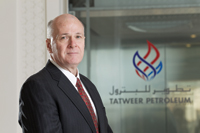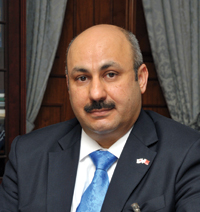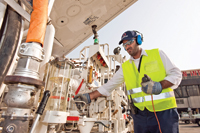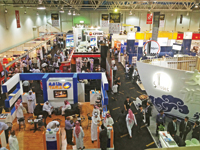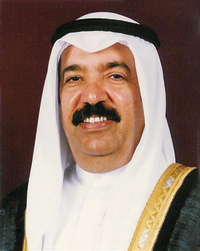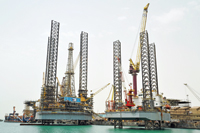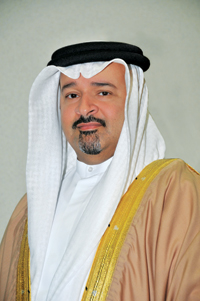
 Dr Sheikh Mohamed ... 2012 was more than satisfactory
Dr Sheikh Mohamed ... 2012 was more than satisfactory
BAHRAIN produces approximately 1.7 billion standard cubic feet per day (bscfd) of natural gas plus 265 million scfd of residue gas produced from Banagas LPG plant, all of which is consumed domestically, mostly for power generation. Bahrain will be able to meet their needs for fuel gas for the next 10 years.
“Bahrain has a wider strategic goal than just meeting the growing demand for gas in case of future shortage,” says Banagas chief executive Dr Sheikh Mohamed bin Khalifa Al Khalifa.
“The National Oil and Gas Authority (Noga) is exploring different options. The latest is the potential development of an LNG import/export terminal, which would purchase LNG (either on contract or on the spot market) during times of low demand such as summer time in Europe.
“However the enormous infrastructure cost of such a venture would only make sense if LNG becomes a significant and sustained import or export,” says Dr Sheikh Mohamed in an exclusive interview with OGN.
Excerpts from the interview:
How was the operational and financial results for Banagas in 2012 and what is the market outlook for 2013?
Banagas’ operational and financial result in 2012 was more than satisfactory. Operation of the facilities was excellent with no major problems and and with no lost time accidents. Consolidated sales revenue was well above budget due to the improvement in products prices during the year. The outlook for 2013 seems likely to be similar to 2012 with slight improvements in liquid petroleum gas (LPG) price during the first and fourth quarters.
What is the latest progress update on Banagas’s current and future gas projects?
Overall progress of work on construction of gas compressor station No 9 is above 75 per cent and the station is expected to be in operation in August this year.
The new control room in the central gas plant is nearing completion, readying for migration of the distribution control system of central gas plant 2 in November 2013.
Overall progress on the debottlenecking of the gas plant has now reached 20 per cent and this project is due to complete by mid 2014.
What national, regional and international recognition has Banagas received during the last year?
Banagas is proud of achieving a record eight million man hours without a lost time accident since May 2002 and also for receiving accreditation to ISO 14001 and OHSAS 18001. This is in addition to receiving the Oil and Gas sector Award from ROSPA (UK), Distinction Award from BSC (UK), GPA Environmental Excellence Award (US), GPA Division I-First Place (US) and Occupation Excellence Award from NSC (US).
 |
|
Banagas’ operating mission is to process |
We also received prestigious awards from the Arab Organisation for Administration Science (Arab League) and from Tatweej Academy (Lebanon) in recognition of the company’s achievements in the field of human resources development and quality management.
How does Banagas ensure quality in its operations? What have been your achievements in this regard?
Assessors from the British Standards Institute carried out a successful assessment during 2012 confirming the continuation of the company’s quality management system certification to ISO9001:2000 and ISO14001. Our internal audit process continues to focus on strategic areas and to measure performance in order to ensure consistently high standards.
What is the impact of gas shortages on Bahrain’s oil and gas sector?
Bahrain has a wider strategic goal than just meeting the growing demand for gas in case of future shortage. The National Oil and Gas Authority (Noga) is exploring different options. The latest is the potential development of an LNG import/export terminal, which would purchase LNG (either on contract or on the spot market) during times of low demand such as summer time in Europe. However the enormous infrastructure cost of such a venture would only make sense if LNG becomes a significant and sustained import or export.
What is your gas production and consumption forecast for the next five years for Bahrain?
Bahrain produces approximately 1.7 billion standard cubic feet per day (bscfd) of natural gas plus 265 million scfd of residue gas produced from Banagas LPG plant, all of which is consumed domestically, mostly for power generation. Bahrain will be able to meet their needs for fuel gas for the next 10 years.
How is Banagas addressing environmental concerns associated with gas production?
Banagas has always complied with the environmental regulations and standards applied in the kingdom. The company is committed to protection of the environment and works closely with the General Directorate of Environment and Wildlife Protection. As you know gas is a clean product and we always ensure that there is no flaring no venting of gas in the field unless it is for reasons beyond our control or unforeseen circumstances.
What role will Banagas be playing with Tatweer Petroleum?
Banagas’s operating mission is to process associated gas which is a byproduct of crude oil. Without Banagas an average volume of 300 mscfd of gas would have to be flared/vented in the Bahrain field. In accordance with the “Development and Production Sharing Agreement” (DPSA) signed between Noga and Tatweer Petroleum no gas should be vented or flared without prior approval from Noga. Without Banagas, Tatweer Petroleum would not be able to fulfil that obligation.
What in your opinion is the outlook and expectations for the deep gas exploration being undertaken by Oxy?
The outlook, I personally believe, will hopefully be good despite this being their first attempt in the kingdom, requiring both expertise and the latest technology. I believe that Occidental possesses both.



































































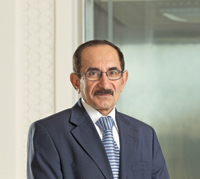
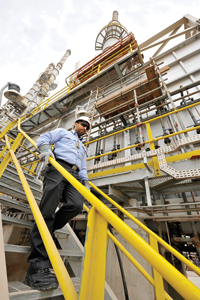
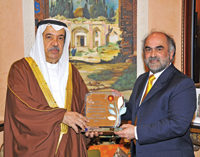
.jpg)
.jpg)
